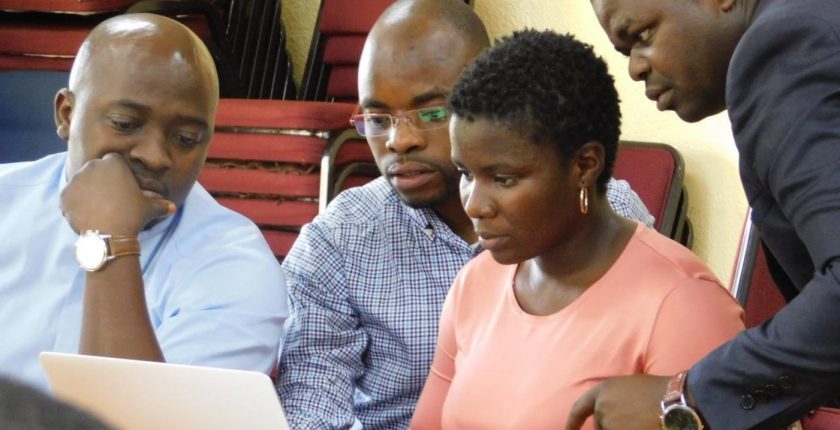Catholic communicators from the nine southern African countries represented by the Inter-Regional Meeting of Bishops in Southern Africa (IMBISA) were put through their paces during an intensive three-day IMBISA Media and Communications Workshop held in Benoni, South Africa. Ricardo da Silva, a South African Jesuit, was one of the members of the training team. He reports on the experience of the first-of-its-kind workshop in the IMBISA region.
The Inter-Regional Meeting of Bishops in Southern Africa (IMBISA) hosted a Media and Communications workshop from 5-7 November 2018 at the Lumko Centre in Benoni, South Africa.
The workshop gathered 33 participants chosen from the nine member countries represented by IMBISA: Angola, Botswana, eSwatini, Lesotho, Mozambique, Namibia, São Tomé e Príncipe, South Africa and Zimbabwe.
Made possible through the support of the United States Conference of Catholic Bishops, CREC International and the Jesuit Institute South Africa, the workshop was the first of its kind for IMBISA. The initiative seeks to develop and significantly improve the quality of communication for IMBISA in sub-Saharan Africa.
Among the participants were lay women and men, ordained priests and a bishop. Most were involved in some way with communications and media efforts in their respective dioceses but had never received professional training for this highly-skilled work. It was this realisation that prompted the discussion between the interested partners last year.
The project was spearhead by the bishop of Manzini, eSwatini, who is also the bishop responsible for IMBISA media and communications, José Luís Ponce de León IMC. With CREC and the Jesuit Institute, they pooled their resources and managed to source the funding and provide the training expertise required to realise a workshop of this magnitude on the African continent.
Four trainers were on hand with a breadth of local and international experience to facilitate the three-day learning experience. Seàn-Patrick Lovett, head of English programming for Vatican Media in Rome for the past 41 years, a seasoned journalist and communications expert initiated the training.
With an abundance of energy and confidence Lovett asked participants whether they were “comfortable”. Having conducted such an exercise before, he knew what the answer would be. Naturally participants eagerly responded with a predictable “Yes”. But, that was the wrong answer.
Bishop Stanislaw Dziuba OSPPE of the Diocese of Umzimkulu joins participants and listens in on one of the presentations. | Photo: IMBISA
“We can never be comfortable or at rest”, remarked Lovett. A communications professional must always be prepared for the unexpected because that’s their job. To report when it’s least expected and to capture the shot that nobody else sees. With this he invited participants to “become uncomfortable”.
At the end of the three days most of the participants reported that they had grown incr easingly uncomfortable, if in retrospect extremely grateful. The trainers had unexpectedly turned the tables on them and on what they might have expected from such a workshop.
The workshop offered some theoretical input but was mainly focused on equipping those attending with hands- on skills. It shifted their mindsets to respond with far greater creativity, agility and willingness than had probably ever been demanded from them.
Following Lovett’s introductory session, well-known South African Jesuit priest and director of the Jesuit Institute South Africa, Russell Pollitt, spoke candidly with participants about the changing face of media. He impressed upon them the demands that are being placed on Church communications, not only but especially given the advent of social media, which as he reminded them “is definitely not new”. It was surprising that despite being at the helm of large communications organisations in their countries, such as local Church radio and print titles, many were only awakened to the possibilities of Facebook, Twitter and YouTube through their participation at the workshop. This was a sure sign of the task at hand but also of the untapped potential for Church communications in the region.
Before lunch on the first day the training room was quickly turned into a make-believe media house. The realisation of what was expected and how far they would be pushed dawned fast on participants. They quickly became reporters and the trainers formed a demanding newsroom editorial team. Reporters were given their first assignment together with what for them seemed an “unrealistic” and “too demanding” deadline.
The gauntlet was dropped. Reporters only had the afternoon to produce and file content. Here is an idea of the extent of the demands placed on them. They were first tasked with deciding on a message relevant to a Catholic audience in sub-Saharan Africa. Then, they had to shoot a related video, take pictures, write captions and post these to their social media platforms to communicate their message to the public.
At the end of the day all gathered in the converted newsroom to present their content and submit it to the critical eye of fellow reporters and the critical ear, eye and pen of the editors. Much to participants surprise, sub-par work was met with strong criticism. They were not let off easy and were encouraged to get back to work. Participants worked late into the night revising and in some cases having to entirely rethink and redo their initial work, taking on board the advice of their colleagues and the training professionals.
The following days kept the demanding rhythm. Tim Harris, a South African and professional designer introduced participants to sound web design principles, taught them how to take good photographs using their mobile phones taking into consideration the many variables involved and inspiring them to take risks and be more creative.
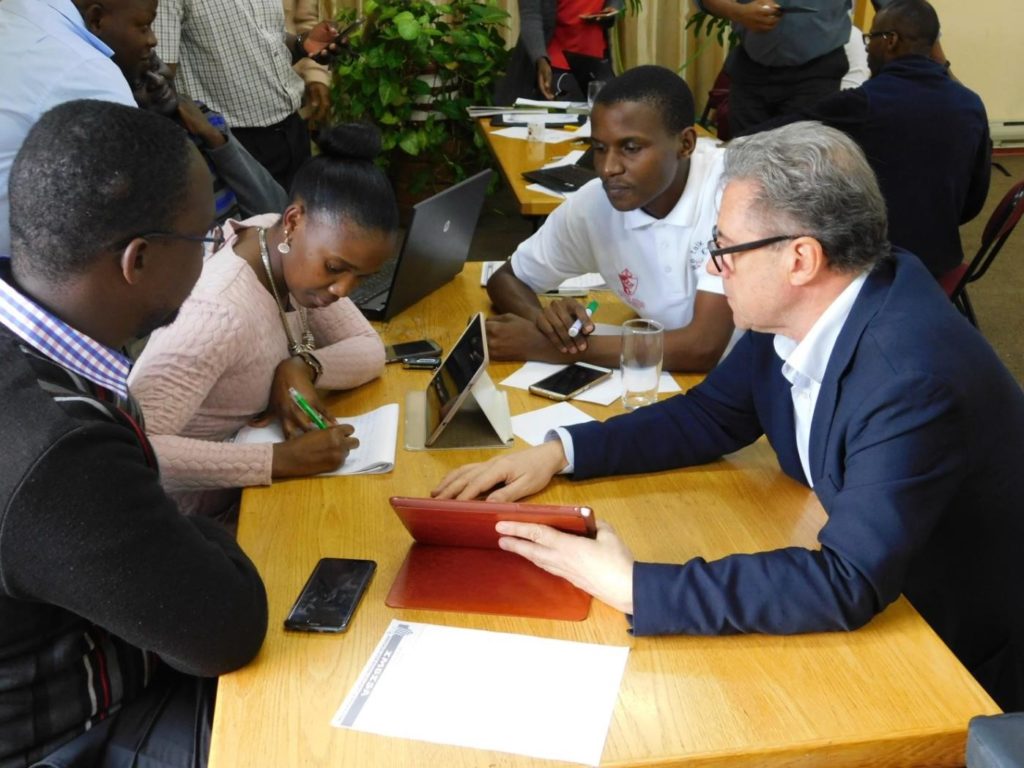
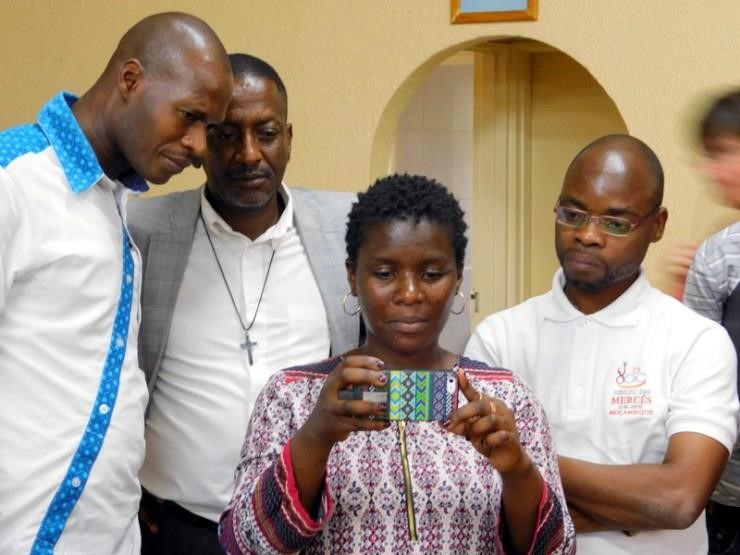
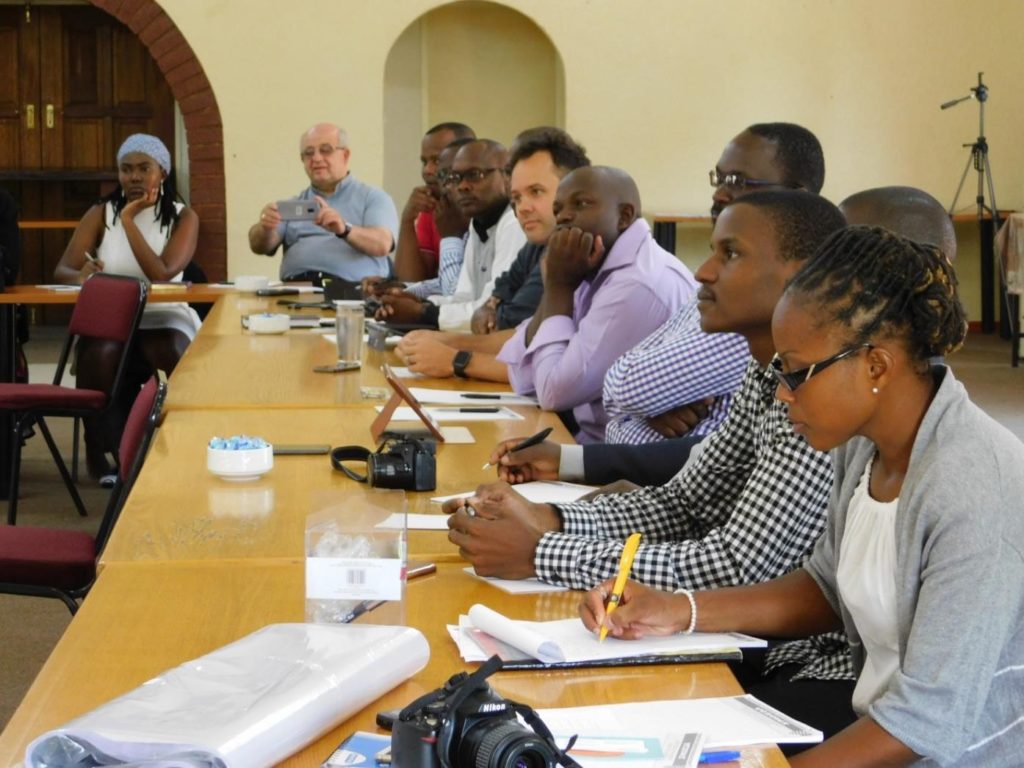
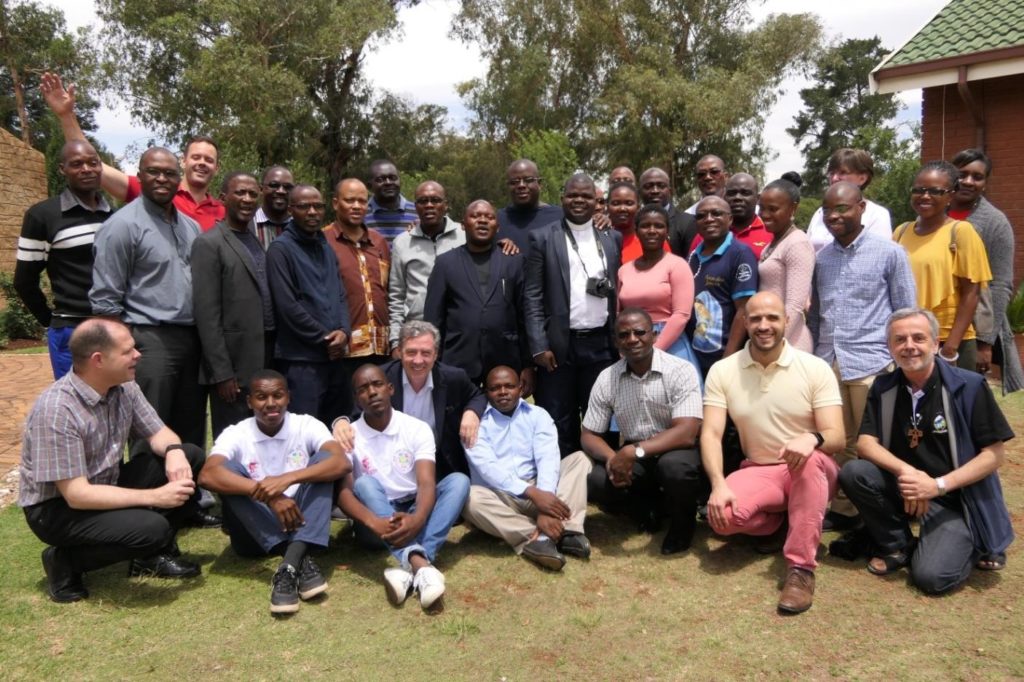
Then, Ricardo da Silva, a South African Jesuit working at the Jesuit Institute’s Spotlight.Africa, a new online portal reporting and reflecting on society, politics, religion and spirituality in Southern Africa, helped participants to grapple with issues of content — especially with the particularities of the written word. He taught them to report news and tell stories in a way that is compelling for a generation largely unaccustomed to reading.
No sooner had he ended his presentation when he launched the participants into their next challenge. The representatives from each of the nine member countries of IMBISA would come together to produce content for the existing IMBISA portal. They worked through the afternoon to present stories from their local contexts. It was clear that with just a few hours of professional input they had received many new skills and were eager to put these into practice as they produced their final assignments.
The workshop reminded participants of the many platforms available to them and the opportunities they present. At the same time, it created awareness of common fears, especially regarding the use of social media, and the need to confront those fears and move out of their comfort zones.
On the final night participants were encouraged when the president of the Southern African Catholic Bishops’ Conference, Archbishop Stephen Brislin of Cape Town, addressed them. He stressed the importance of the mission with which they had been tasked, reminding them of how much the Church relied on them to report with integrity and spread the Good News.
This workshop maps the way forward for dialogue between the nine IMBISA member countries and the organisation’s secretariat in Harare.
by Ricardo da Silva SJ
